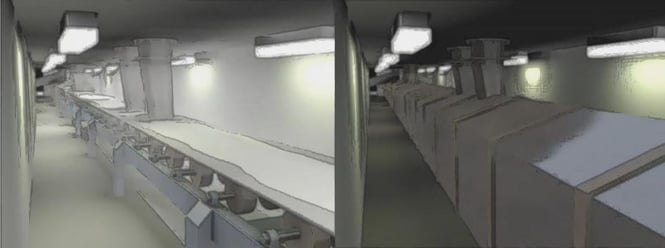 How do you solve the problem of material on a conveyor belt producing dust as it is being transferred, and fugitive dust getting into machinery and causing quality control issues? The obvious answer is to enclose the conveyor belt, which would contain the produced dust in an area where it can’t cause issues. However, what seems like such a straightforward answer to a problem actually ends up creating a massive explosion risk.
How do you solve the problem of material on a conveyor belt producing dust as it is being transferred, and fugitive dust getting into machinery and causing quality control issues? The obvious answer is to enclose the conveyor belt, which would contain the produced dust in an area where it can’t cause issues. However, what seems like such a straightforward answer to a problem actually ends up creating a massive explosion risk.
The dust explosion pentagon explains that containment is one of the essential parts to a dust explosion. Solving a dust issue by enclosing the space may solve the housekeeping issue, but replaces it with the essentials for an explosion.
This exact issue happened at the Imperial Sugar facility in Georgia, when a conveyor belt running between sugar storage silos was enclosed to help prevent the contamination of the sugar on the belt, and reduce the amount of dust that needed to be cleaned from the underground tunnels. What ended up happening was that a cloud of sugar dust built up inside the enclosed conveyor belt, reaching density levels that were much higher than what was allowed and could be found in other parts of the factory.
 When something in the enclosed conveyor belt created a spark, it caused the sugar dust cloud to ignite, and the containment caused the explosion to build enough pressure to push it throughout the rest of the building, leading to explosions that caused 14 workers to be killed. The possibility of a dust explosion was not even considered when building enclosing these conveyor belts, even though management at the plant should have been very well aware of the combustibility of sugar dust.
When something in the enclosed conveyor belt created a spark, it caused the sugar dust cloud to ignite, and the containment caused the explosion to build enough pressure to push it throughout the rest of the building, leading to explosions that caused 14 workers to be killed. The possibility of a dust explosion was not even considered when building enclosing these conveyor belts, even though management at the plant should have been very well aware of the combustibility of sugar dust.
According to the CSB report about the Imperial Sugar explosion, “although sugar dust was generated as the sugar flowed onto the belt and when flow blockages caused sugar to spill off the belt, these new enclosures were not equipped with a dust removal system and were not equipped with explosion vents.”
NFPA 652 Standard on the Fundamentals of Combustible Dust requires that facilities perform a Dust Hazard Analysis to discover any potential dust explosion scenarios in the facility and take the necessary precautions to reduce the risk of explosion.
Concerned that your factory might be producing dangerous levels of combustible dust?
Contact a Hughes Environmental representative to learn how we can safely remove the hazard of a combustible dust explosion. Our technicians are OSHA trained and use explosion proof vacuum cleaners when handling combustible dusts.

